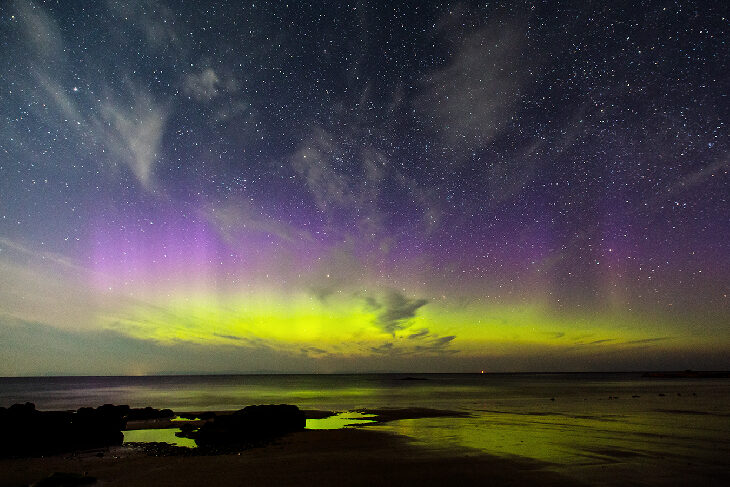OF THE
TIMES
A small body of determined spirits fired by an unquenchable faith in their mission can alter the course of history.
Off leash or what? Did the mother think her 15mo child needed to visit a couple of pit bulls for fun? This story is so badly written it makes one...
Did that include being chief fluffer for Big Mike :O The defendant held multiple roles in the Obama administration Fluffer (Wiki explanation) -...
Comment: One would be naive to think that those sex crimes against children only started once he left the White House. His sexual depravities were...
I see that they practice without the FAB 500 glide bombs being dropped on them :O "Everyone has a plan until they get punched in the mouth" - Mike...
“…Fears and deep-seated anxieties” are what create the need for power – and wars. But power is an illusion, no one can hold it forever. History...
To submit an article for publication, see our Submission Guidelines
Reader comments do not necessarily reflect the views of the volunteers, editors, and directors of SOTT.net or the Quantum Future Group.
Some icons on this site were created by: Afterglow, Aha-Soft, AntialiasFactory, artdesigner.lv, Artura, DailyOverview, Everaldo, GraphicsFuel, IconFactory, Iconka, IconShock, Icons-Land, i-love-icons, KDE-look.org, Klukeart, mugenb16, Map Icons Collection, PetshopBoxStudio, VisualPharm, wbeiruti, WebIconset
Powered by PikaJS 🐁 and In·Site
Original content © 2002-2024 by Sott.net/Signs of the Times. See: FAIR USE NOTICE


Reader Comments
R.C.
Sometimes, you can see them in England, but more often from Scotland.
I hope to see one someday but that will probably have to be in Russia as I damn sure ain't going to Canada - another place I'd hoped to visit that I've now written off.
RC
*Of course, they can and do, such as Chelyabinsk. Also, when I reported my second bolide to AMS, they specifically ask if you heard anything and I guess sometimes folks do.
rc
I have seen them several times, but have never heard anything.
I heard a bolide once years ago. I heard it and saw it simultaneously. That puzzled me for years, until I read about the electric universe.
In a quiet area a low "hum" can be heard but not always.
Also, good point: I've not yet written off Alaska. (Yeah, when I say I've written off Europe, that means the UK also. Sad. The only way I could see myself ever getting there would be to take a boat across the Atlantic, and while the Gulfstream (as currently configured) indicates that the best way would be to follow it, I have no great desire to experience the North Atlantic in a small catamaran. That would leave me to instead traverse across to the Azores or such, and then north, and as scary as all oceans are, getting up by the UK/North Atlantic still scares the hell out of me. (I guess I'd prefer to starve in the doldrums and the horse latitudes? I dunno. I do know that one can, from here, effectively island hop all the way to Brazil or the Panama Canal.)
RC
*Read Conrad in general. Also, in particular, read his 'The Nigger of the Narcissus'. Free at: [Link]
Also, for some fun, read Conrad's 'Youth' (for all of the stupid things you did that you somehow survived) or 'The Shadow Line' for when you first realized that others were really depending upon you. Or for looking back at real stupidly fun stuff, The Arrow of Gold.
RC
RC
If I could meet folks who are now beyond where we are, two of my highest candidates would be Conrad and Twain. Angry little bastards, too. (Then again, Bush*t I would be up there also, just so I could increase the heat on his barbecue.)
rc
If you like Twain, I bet you'd like his stuff.
Meanwhile, I'd guess that by the time most UK-ites got out of 'HS'/'12th Grade'/ WTF-Ever 'Form', that they've read and can recall the plotlines of at least 3 Conrad works.
As re AK, my father loved Jack London's stuff. (He was born to a cotton sharecropper in SC ~ 1930 but moved to London's SF Bay area at around age 10 - say ~1940.)
As re Twain, his last works, such as Mysterious Stranger (yes, I know about it validly being described as some post mortem work of bastardy (though I don't think that it was ever described that way), The War Prayer; et al., are those which seem to most clearly explicate our human condition. It is so sad to read it lying there by the gutter; society is so clueless or better said, is surrounded by adversities which it never will have the fortitude to face.
(I guess that came out less literal than I intended. I'm just going to leave it.
RC
just say'n.
ps. black aurora's matter